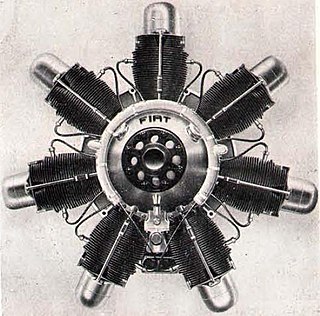Related Research Articles

A Formula One car is a single-seat, open-cockpit, open-wheel racing car with substantial front and rear wings, and an engine positioned behind the driver, intended to be used in competition at Formula One racing events. The regulations governing the cars are unique to the championship and specify that cars must be constructed by the racing teams themselves, though the design and manufacture can be outsourced.

The Honda D series inline-four cylinder engine is used in a variety of compact models, most commonly the Honda Civic, CRX, Logo, Stream, and first-generation Integra. Engine displacement ranges between 1.2 and 1.7 liters. The D Series engine is either SOHC or DOHC, and might include VTEC variable valve timing. Power ranges from 66 PS (49 kW) in the Logo to 130 PS (96 kW) in the Civic Si. D-series production commenced 1984 and ended 2005. D-series engine technology culminated with production of the D15B 3-stage VTEC (D15Z7) which was available in markets outside of the United States. Earlier versions of this engine also used a single port fuel injection system Honda called PGM-CARB, signifying the carburetor was computer controlled.

The Jabiru 3300 is a lightweight four-stroke, horizontally opposed "flat-six" air-cooled aircraft engine produced by Jabiru Aircraft. The engines are direct drive and fitted with alternators, silencers, vacuum pump drives and dual ignition systems as standard. The engine is used to power homebuilt and ultralight aircraft.

The Potez 4D was a four-cylinder, inverted inline aircraft engine. It was first built shortly before World War II, but did not enter full production until 1949. Like the other D-series engines, the cylinders had a bore of 125 mm (4.9 in) and a stroke of 120 mm (4.7 in). Power for different models was in the 100 kW-190 kW (140 hp-260 hp) range.

The Agusta GA.70 was a four-cylinder, air-cooled, horizontally opposed engine developed in Italy for light aircraft and helicopter use. The GA.70/V featured a bottom sump for vertical applications and was rated at 61 kW (82 hp). It was produced in the 1950s and 1960s.

The Siemens-Halske Sh 14 was a seven-cylinder air-cooled radial engine for aircraft produced in Germany in the 1920s and 1930s. First run in 1928, it was rated at 93 kW (125 hp).

The Wright R-2160 Tornado was an experimental 42-cylinder, 7-cylinder per row, 6-row liquid-cooled inline radial aircraft engine. It was proposed in 1940 with 2,350 hp (1,752 kW) for experimental aircraft such as the Lockheed XP-58 Chain Lightning, Vultee XP-68 Tornado, and the Republic XP-69.

The Kinner B-5 was a popular five cylinder American radial engine for light general and sport aircraft of the 1930s.

Alessandro Anzani developed the first two-row radial from his earlier 3- cylinder Y engine by merging two onto the same crankshaft with a common crankweb.

The Nissan VRH engine family consists of several racing engines built by Nissan Motor Company beginning in the late 1980s. All VRH engines are in a V8 configuration, with either natural aspiration or forced induction. Some VRH engines are loosely based on Nissan's production V8 engine blocks, including the VH and VK engines, while others were designed from the ground up for racing and share no components with production blocks.
The D-Motor LF26 is a lightweight liquid cooled side-valve four-stroke flat four, 2.7 litre petrol aircraft engine, produced by D-Motor in Deerlijk, Belgium.

D-Motor is a Belgian aircraft engine manufacturer based in Deerlijk. The company specializes in the design and manufacture of aircraft engines for homebuilt and ultralight aircraft.
The Renault 6P, also called the Renault Bengali, was a series of air-cooled 6-cylinder inverted in-line aero engines designed and built in France from the late 1920s, which produced from 130 kW (180 hp) to 200 kW (270 hp).
The Renard Type 100 was a five-cylinder, radial piston engine, designed and produced in the late 1920s and early 1930s by Société Anonyme des Avions et Moteurs Renard (Renard) in Belgium.

The Fiat A.55 was a seven-cylinder, air-cooled radial engine developed in Italy in the 1930s as a powerplant for aircraft.

The Fiat A.53 was a seven-cylinder, air-cooled radial piston engine developed in Italy in the 1930s as a powerplant for aircraft.
References
- 1 2 "LF 39". D-Motor International. Retrieved 16 March 2019.
- 1 2 3 "Kapelstraat 198 8540 Deerlijk - Recent information". D-motor1.vpweb.be. Archived from the original on 2012-03-28. Retrieved 2012-08-14.
- ↑ D-Motor publicity specification sheet, August 2014
- ↑ D-motor performance graph
- ↑ "Kapelstraat 198 8540 Deerlijk - News". D-motor1.vpweb.be. Archived from the original on 2012-03-28. Retrieved 2012-05-10.
- ↑ D-Motor (2014). "Expected Price". www.d-motor.eu. Archived from the original on 3 September 2014. Retrieved 1 September 2014.
- ↑ "D-motor update ultralight engine". D-Motor. Archived from the original on 22 January 2018. Retrieved 8 December 2014.
- ↑ "Technische Daten". EDM Aerotec GmbH. Retrieved 8 December 2014.
- ↑ "LF26 specifications". D-motor. Archived from the original on 2 June 2014. Retrieved 26 June 2012.
- ↑ D-Motor (15 March 2019). "LF39 Dimensions". d-motor.eu. Archived from the original on 3 September 2014. Retrieved 1 September 2014.